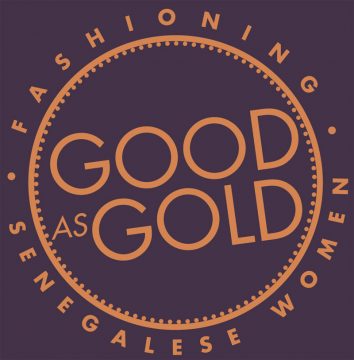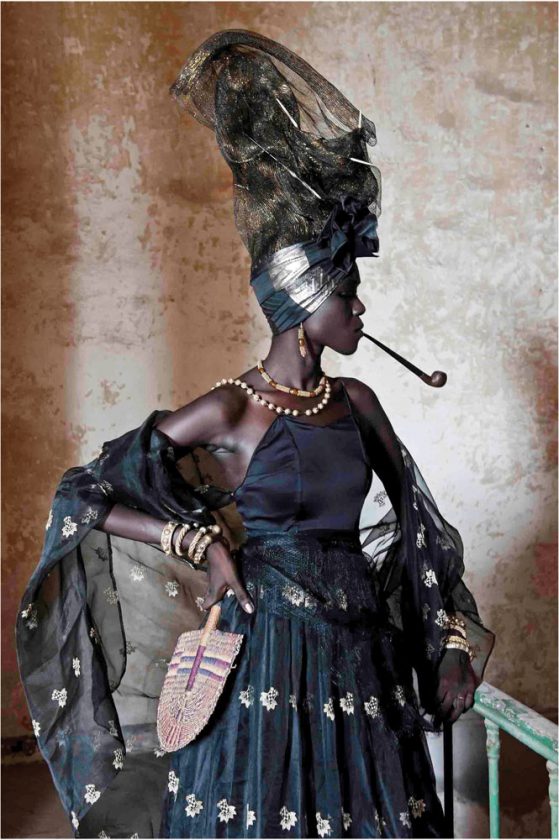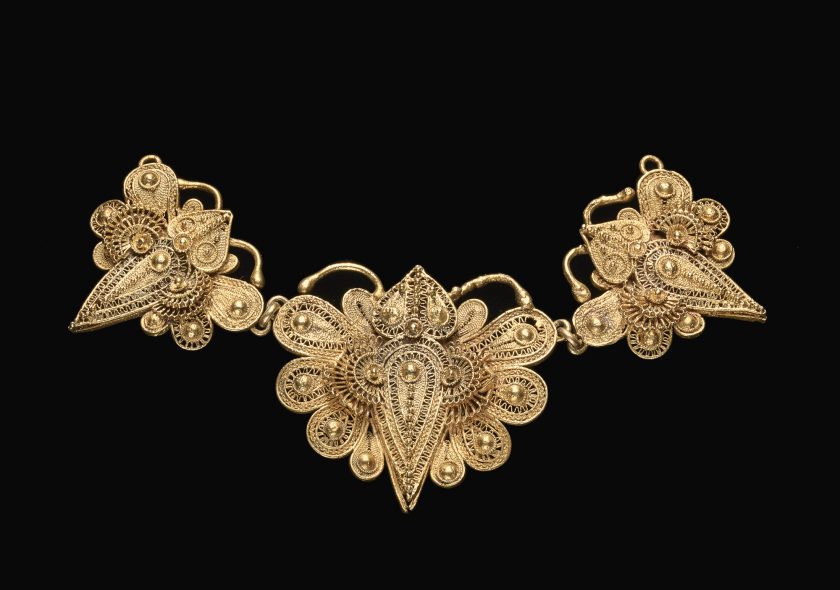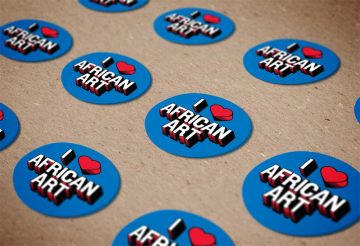Senegalese women still possess an unrivaled flair for displaying clothing, jewelry, and other finery. Or de Galam is still the byword for quality and purity.
—George E. Brooks, emeritus professor of history, Indiana University, Bloomington
 Jewelry acts. For urban women in Senegal, jewelry is more than a showy trinket or decoration. It has long been a means for fashioning a cosmopolitan identity of power and prestige. Adhering to the Wolof concept and practice of sañse—dressing up, looking and feeling good—a woman in a place like Dakar, for example, selects specific gold jewelry to assemble a carefully tailored, elegant fashion ensemble.
Jewelry acts. For urban women in Senegal, jewelry is more than a showy trinket or decoration. It has long been a means for fashioning a cosmopolitan identity of power and prestige. Adhering to the Wolof concept and practice of sañse—dressing up, looking and feeling good—a woman in a place like Dakar, for example, selects specific gold jewelry to assemble a carefully tailored, elegant fashion ensemble.
The artworks in Good as Gold can be understood not in the fragmentary state in which we see them here, but as part of a broader constellation of identity, nationhood, politics, wealth, and individual taste. Fundamental to larger social and economic processes that are constantly changing, gold jewelry can reveal deeper histories and practices in Senegalese life, particularly for the women who commission, buy, wear, and remake them. These expressions contribute to an ongoing international dialogue that pulls from deep roots in a rich regional history. Sañse, then, is the whole ensemble—a totality that takes into consideration a network of interconnected meanings and associations, both local and global, that is driven by women.
Good as Gold, grounded in the research and collection of art historian Marian Ashby Johnson, is the first in-depth exhibition to explore the history of Senegal’s gold, from past to present, and the beauty and complexity of the way Senegalese women present themselves.

b. 1972, Namur, Belgium
Works in Dakar, Senegal
Signare #1
2011
Exhibition print
Courtesy Mariane Ibrahim Gallery, Seattle
Reconstructing. Inspired by the distinct fashion sense of historic signares, Beninois-Belgian photographer Fabrice Monteiro created a series of images evoking these legendary characters. He worked with Senegalese women in Dakar who reimagined themselves as contemporary signares—highlighting not just their beauty, but their strength, power, and business acumen. As Monteiro states, “it is not a reportage, but a reconstruction . . .” By reconstructing signares from a feminist perspective, Monteiro and the models are able to recover, reconstruct, and reify the power of women in the present.

Dakar, Senegal
Butterfly necklace pendant
1930s–1950s
Gold-plated silver alloy
Gift of Dr. Marian Ashby Johnson, 2012-18-45
Creative repurposing. In order to document historic forms, Johnson often bought jewelry otherwise destined for the goldsmith’s melting pot. This European-inspired butterfly pendant is one such piece and as a result is one of the oldest in the collection.
#GoodasGold
